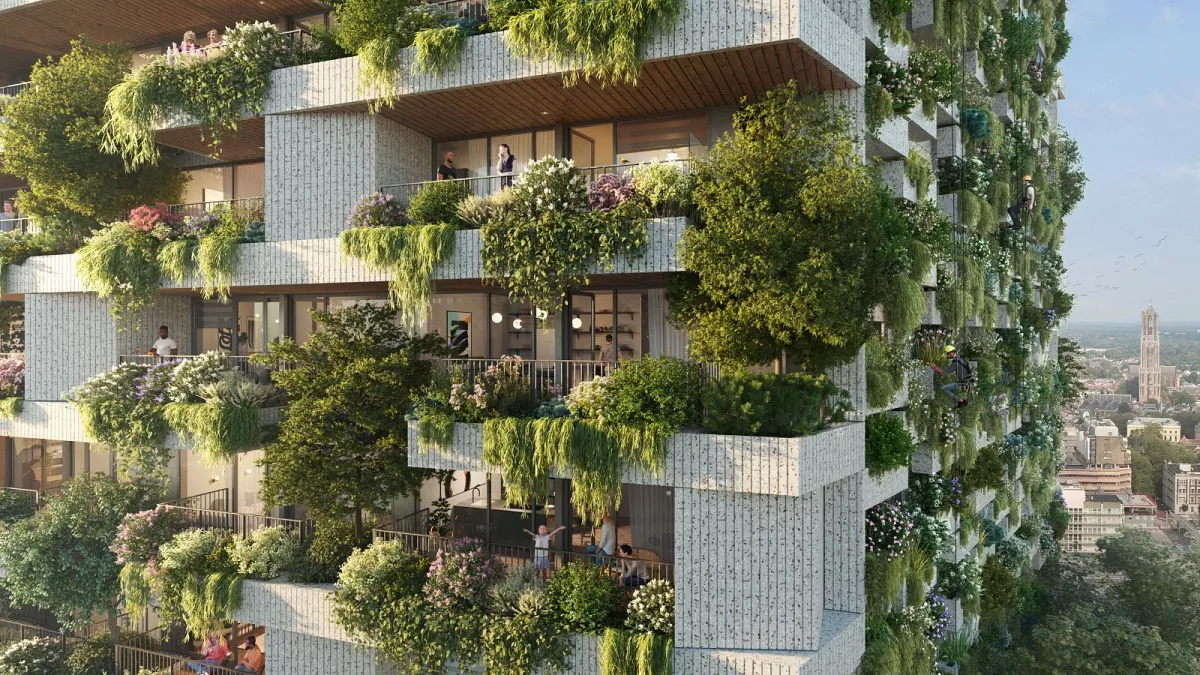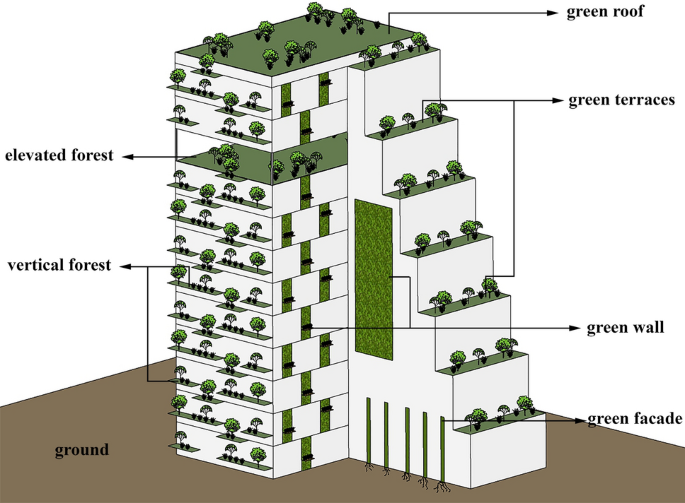
Vertical Forests: The Rise of Biodiversity-Focused Urban Housing
Discover how vertical forests transform cities into sustainable ecosystems.Vertical Forests: The Rise of Biodiversity-Focused Urban Housing
Imagine stepping out onto your balcony, 30 stories above the bustling city streets, and being greeted not by concrete and glass, but by a lush canopy of trees, the gentle rustle of leaves, and the chirping of birds. This isn't a scene from a futuristic sci-fi novel – it's the reality of vertical forests, an innovative approach to urban architecture that's transforming our cityscapes and redefining our relationship with nature.
As an urban planner who's spent years studying the intersection of architecture and ecology, I've watched with fascination as vertical forests have evolved from a radical concept to a tangible solution for some of our most pressing urban challenges. These towering green structures are more than just aesthetically pleasing – they're a powerful tool in our fight against climate change, biodiversity loss, and the psychological toll of urban living.
What Are Vertical Forests?
Vertical forests are high-rise buildings designed to incorporate large numbers of trees, shrubs, and plants on their facades and balconies. Unlike traditional green walls or rooftop gardens, vertical forests integrate vegetation as a core component of the building's structure and function. The concept was pioneered by Italian architect Stefano Boeri, whose Bosco Verticale in Milan has become an iconic example of this innovative approach[1].
These living buildings typically feature staggered, oversized balconies that can support full-sized trees, along with a variety of smaller plants and shrubs. The vegetation is carefully selected to thrive at different heights and exposures, creating a diverse ecosystem that extends from ground level to the top floors.

Environmental Benefits: A Breath of Fresh Air
From my observations, the environmental impact of vertical forests is nothing short of remarkable. These green giants act as natural air purifiers, absorbing carbon dioxide and releasing oxygen. In fact, the Bosco Verticale in Milan is estimated to convert approximately 44,000 pounds of carbon dioxide into oxygen each year[1]. That's like having a small forest right in the heart of the city!
But the benefits don't stop there. Vertical forests also help mitigate the urban heat island effect, a phenomenon I've studied extensively in my work. The plants provide natural cooling through shade and evapotranspiration, potentially reducing the energy needed for air conditioning in the building and the surrounding area.

Perhaps most excitingly, these structures create new habitats for urban wildlife. During a recent visit to a vertical forest project, I was amazed to see birds nesting in trees 20 stories above the ground, and butterflies flitting between flowers on the highest balconies. It's a powerful reminder that with the right design, we can create thriving ecosystems even in the most unlikely places.
Living in the Trees: The Human Impact
As someone who's spent most of my life in cities, I can attest to the psychological toll that constant exposure to concrete and asphalt can take. Vertical forests offer a unique solution to this urban malaise. Studies have shown that exposure to nature can reduce stress, improve mood, and even boost cognitive function[2].
Living in a vertical forest isn't just about having a nice view – it's about being immersed in a living, breathing ecosystem. Residents can experience the changing seasons, watch birds build nests, and even grow their own herbs and vegetables. It's a way of reconnecting with nature without leaving the city.
Challenges: It's Not All Sunshine and Roses
Of course, as with any innovative concept, vertical forests come with their share of challenges. From a structural perspective, supporting the weight of full-grown trees and saturated soil on a high-rise building is no small feat. Engineers have had to develop new techniques to ensure the buildings can bear this additional load safely.
Maintenance is another significant hurdle. In my conversations with building managers of vertical forest projects, I've learned about the complexities of caring for plants at such heights. Specialized "flying gardeners" – arborists trained in climbing techniques – are often employed to prune and maintain the vegetation[1].
Water management is also a critical concern. While many vertical forests incorporate rainwater harvesting and greywater recycling systems, ensuring adequate irrigation without wasting water requires careful planning and sophisticated technology.
The Future is Green: Vertical Forests Around the World
Despite these challenges, the concept of vertical forests is gaining traction globally. From the Trudo Vertical Forest social housing project in Eindhoven to the ambitious plans for Forest City in Liuzhou, China, architects and urban planners are embracing this green revolution[2].
In my view, the future of urban development lies in finding ways to integrate nature more fully into our built environment. Vertical forests represent a bold step in this direction, offering a vision of cities where the line between urban and natural blurs.
As we face the dual challenges of rapid urbanization and climate change, vertical forests offer a glimpse of a more sustainable, biodiverse future. They remind us that with creativity and innovation, we can transform our cities from concrete jungles into vibrant, living ecosystems.
In the words of Stefano Boeri, "The challenge for the future is to consider the presence of nature as an essential element of our planet's architecture." As I look out over my city's skyline, I can't help but imagine it transformed by towers of green, reaching towards the sky – a true forest in the clouds.
References
- https://urbannext.net/vertical-forest/
- https://www.themomentum.com/articles/vertical-forests-and-their-impact-on-the-environment
- https://parametric-architecture.com/vertical-forests-urban-high-rise/
- https://www.orfonline.org/expert-speak/vertical-forests-solution-mumbai-climate-problem
- https://www.linkedin.com/pulse/concept-vertical-forests-urban-planning-kator-jethro-ifyalem-
- https://global.ctbuh.org/resources/papers/download/2099-a-new-urban-forest-rises-in-milan.pdf
- https://www.stefanoboeriarchitetti.net/en/project/vertical-forest/
- https://www.sciencedirect.com/science/article/pii/S2210670723001488
Modular Mansions: Redefining Luxury Living with Prefab Panache






Comments
No comments yet. Be the first to comment!
Leave a Comment